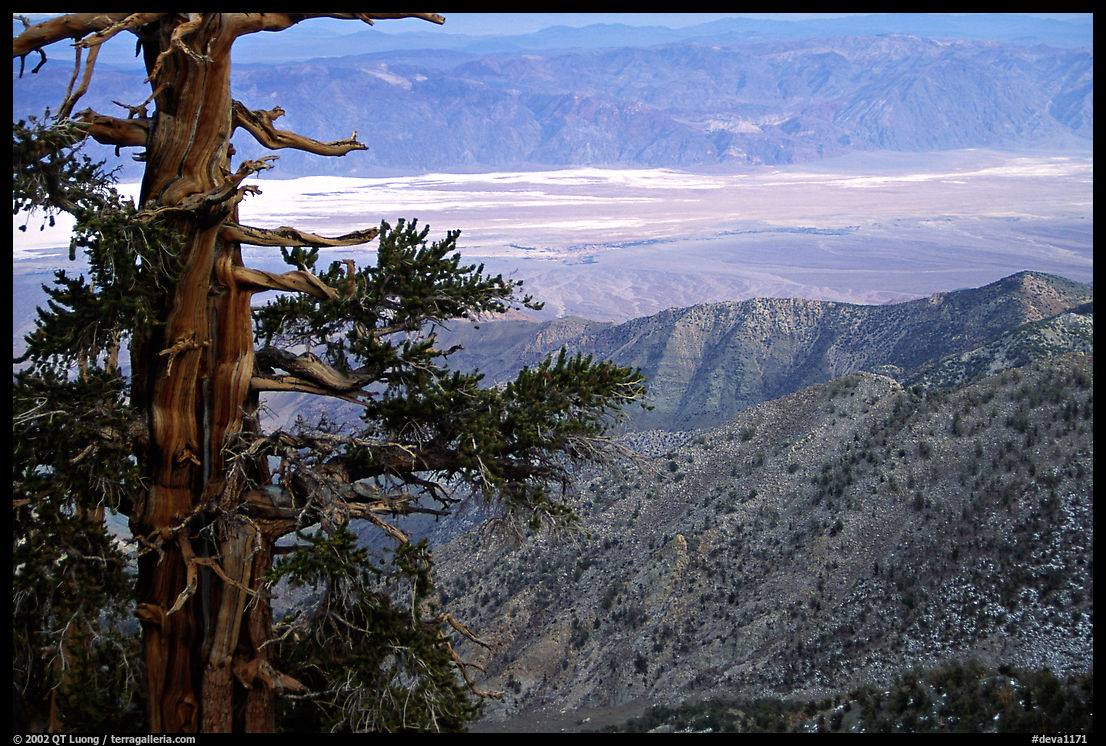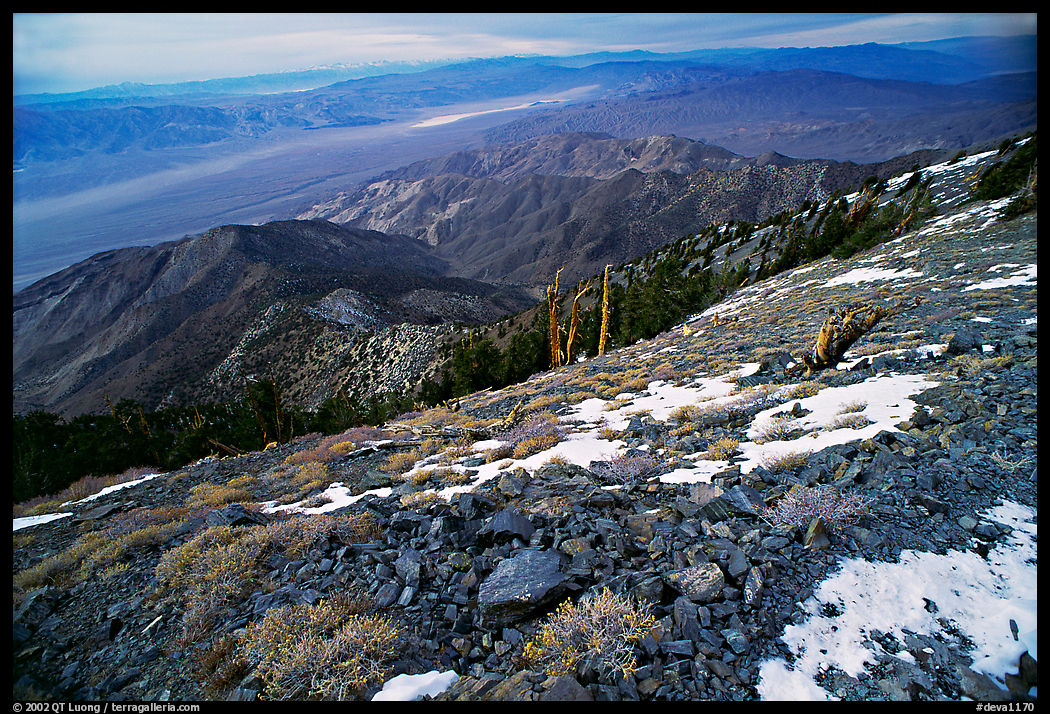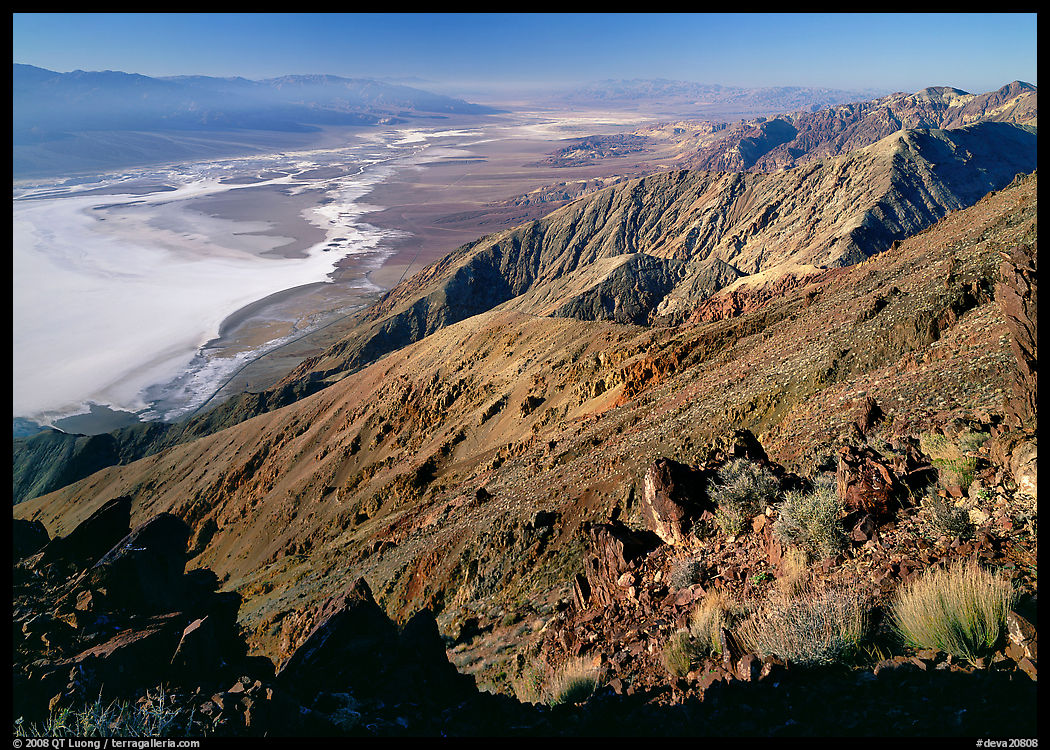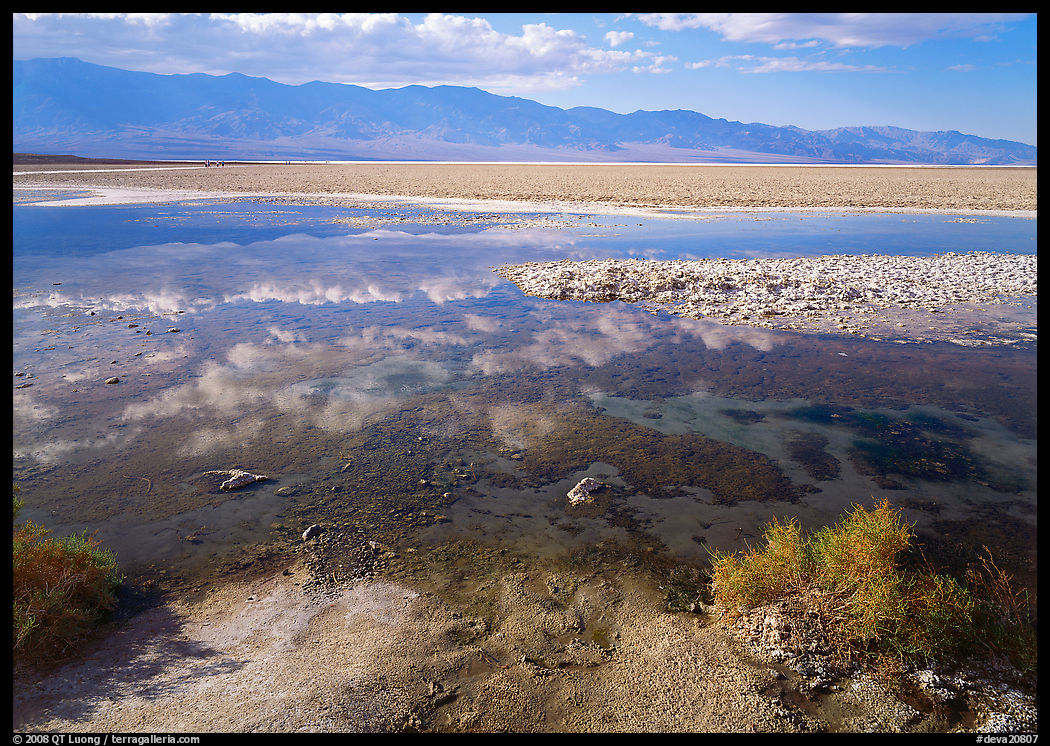Starting Large Format Photography in Death Valley
No Comments
By the fall of 1993, I still didn’t own a car. Back then, the same UC Berkeley student group that I joined for my first trip to Yosemite organized a yearly outing to Death Valley during the Thanksgiving school break. I didn’t know what the place was about, but I had known its name since my childhood through the Lucky Luke comics that take place in the Old West.

The drive was my first excursion east of the Sierra, and the vastness of the open spaces matched what I had imagined before of the American West. However, besides its vastness and aridity, the Panamint Valley appeared at first a barren and unremarkable valley. After that, my introduction to Death Valley was again atypical. We arrived in the late afternoon and set up camp at a higher elevation campsite, maybe Wildrose, where the night was quite cold. The second day, after checking out the Charcoal Kilns, we set out for the 14-mile round-trip hike with 3000 ft elevation gain to Telescope Peak. On the way, I noticed white patches on the floor of Death Valley proper, and at first naively wondered if those were snow. Rather late in the afternoon, we reached the top of Telescope Peak, the highest point in Death Valley at 11,049 feet, where a few snow patches were still lingering, and got back to our camp quite late.

On the third and final day, we drove down to the Valley itself for a bit of sightseeing and stopped at Badwater. The touristy spot impressed upon me more than Telescope Peak because the desert features were close at hand. I stood directly on the salt flat for the first time, an environment new to me. Six months before, I was standing on the top of Denali, the coldest mountain on earth and the top of North America, but here was the place with the hottest recorded temperature on earth and the lowest point in the Western Hemisphere. I was able to appreciate the contrast because I saw both, and began to gain an appreciation for the diversity of nature in America. There were similarities too, better illustrated by the photograph below from Dante’s View made on a subsequent visit – only in this post not from Thanksgiving 1993. If you compare it to the Denali summit photo, the valley with the salt flats echoes the glaciers. Each park represents a unique environment, yet collectively they are all are interrelated.

Between my visits to Denali and Death Valley, I had begun to study the landscape photography tradition in America, which is much stronger than in France, where humanist photographers like Cartier-Bresson, Doisneau were prominent. Amongst the first books I bought in America was a copy of Eliot Porter‘s In Wildness Is the Preservation of the World that I kept at my bedside for weeks. I visited local museums and discovered the experience of viewing Ansel Adams‘s prints in person. They were by far the most beautiful I’d ever seen at that point. Compared to my experience, my photos of Denali disappointed me, so I was eager to try a new approach. I decided to try the same camera as the masters, the large format camera, which was not only a change of gear, but more importantly, a move towards a more deliberate approach to image making. The Death Valley trip was the maiden voyage for my new Tachihara 4×5 equipped with a 5×7 inch extension back.

Because Telescope Peak was a rather rigorous hike during which I needed to keep up with the group, I had not carried the large format camera the day before. Now was the chance to make the much-anticipated exposure. While the group strolled out to the middle of the salt pan, before rejoining them, I stayed behind and took a single picture of the Badwater pond, my second 5×7 exposure and only large-format photograph of Death Valley on that trip – an image that wouldn’t be possible today because of a new boardwalk. When a week later, I inspected that transparency on a light table, I was astonished to see more details than I noticed when I was standing at the scene. That photograph started me on a journey that continues to this day.

